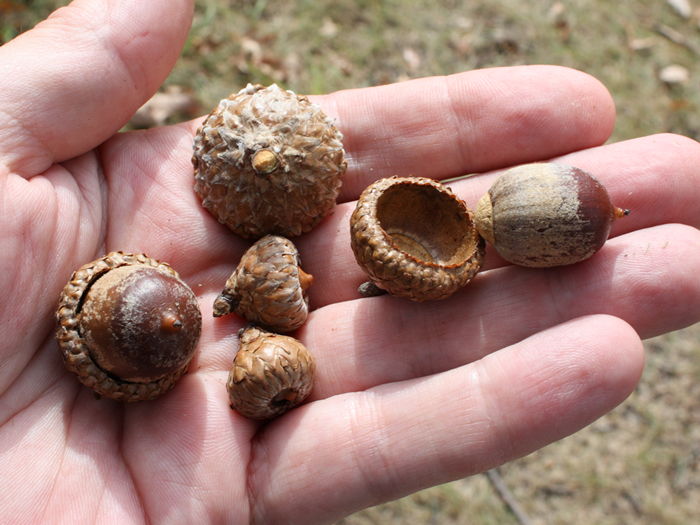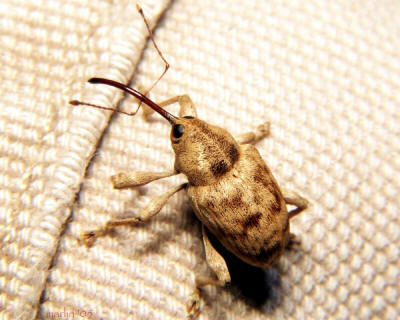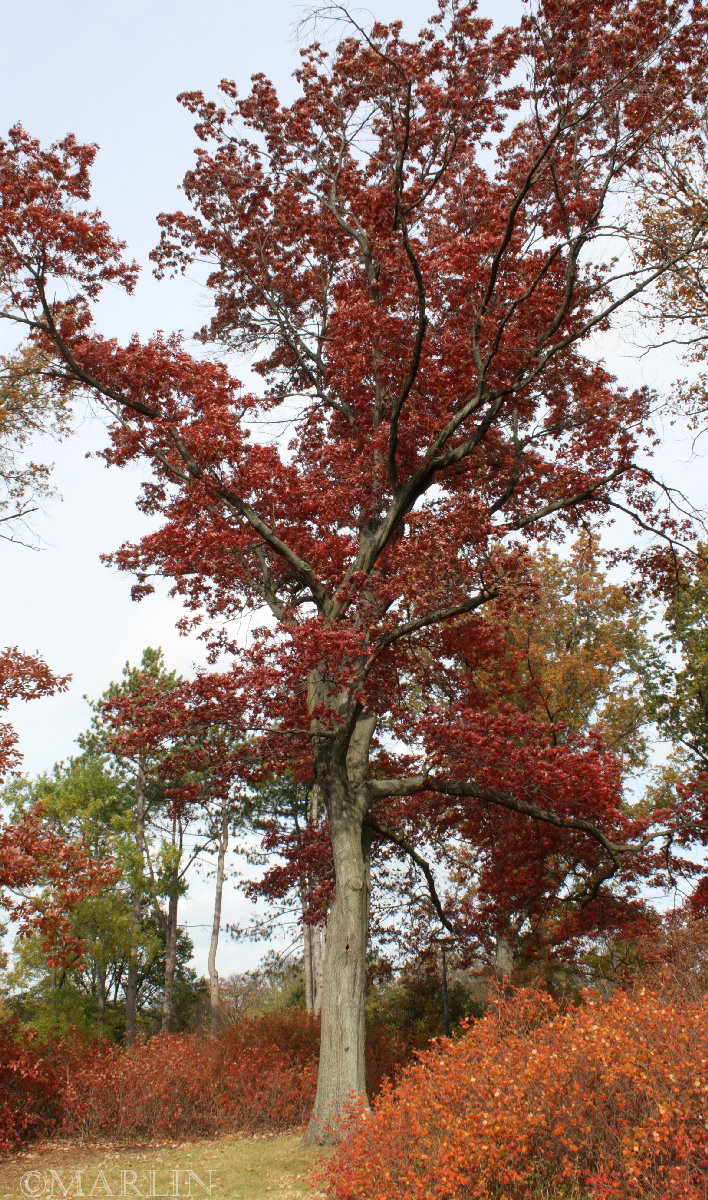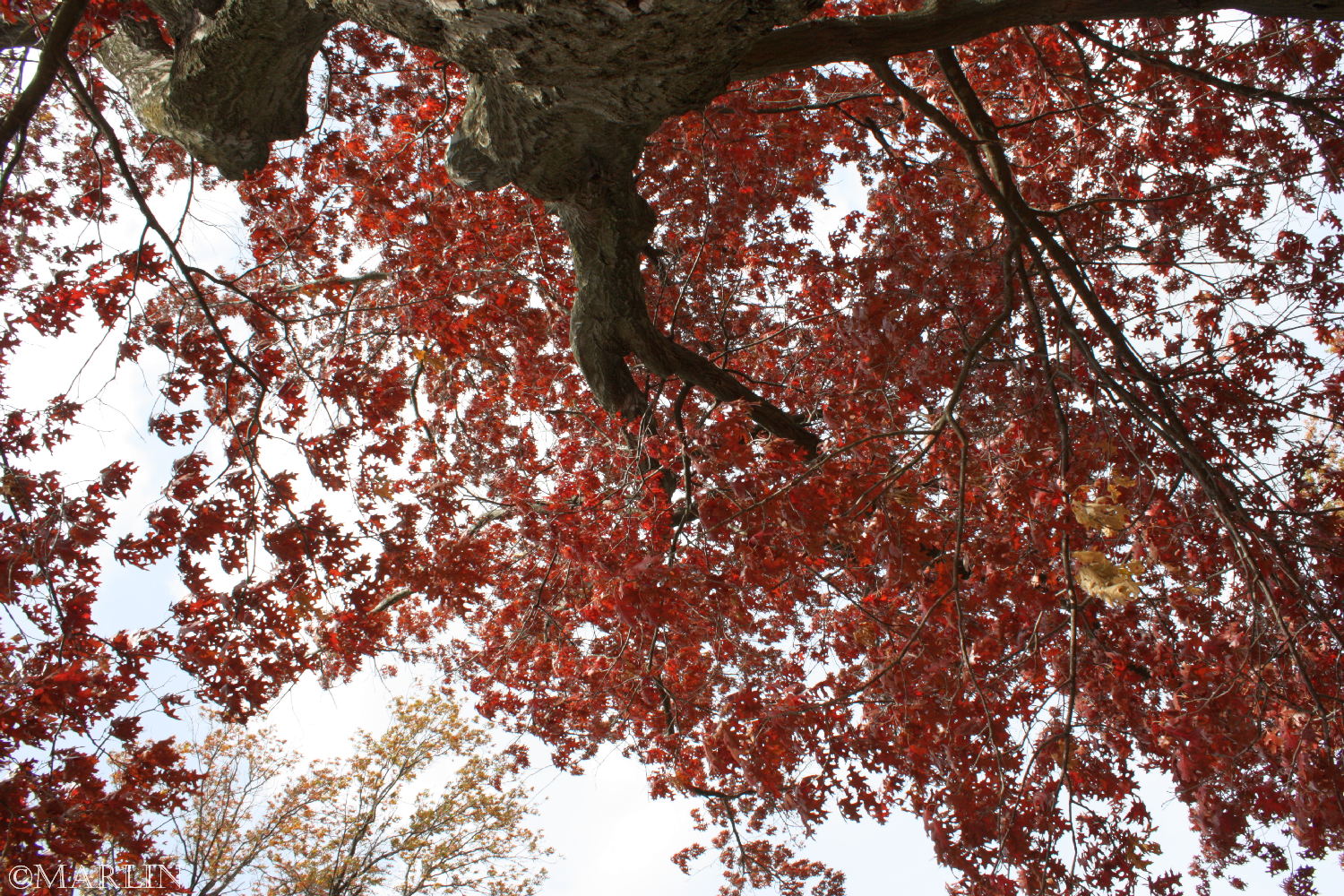Scarlet Oak – Quercus coccinea
Family Fagaceae; Native to China, Korea, and Japan, this slow-growing oak can reach 30 m. USDA zones 6-9

Scarlet oak, also called black oak, red oak, or Spanish oak is best known for its brilliant autumn color. It is a large rapid-growing tree of the Eastern United States found on a variety of soils in mixed forests, especially on light sandy and gravelly upland ridges and slopes.
This scarlet oak was photographed on October 25th, near Chicago.
In addition to its value as a timber and wildlife species, scarlet oak is widely planted as an ornamental. Its brilliant red autumn color, open crown texture, and rapid growth make it a desirable tree for yard, street, and park.
 Acorn Weevil, Curculio sp. |
More than 80 percent of mature scarlet oak acorns may be destroyed by insects. Most insect damage occurs after acorn fall. The most important insect pests are nut weevils Curculio (left), moth larvae (Lepidoptera), and cynipid gall wasps (Cynipidae). The proportion of uninfested acorns is usually highest in years of greatest seed production. Scarlet oak acorns are a choice food for eastern gray squirrels, chipmunks, mice, wild turkey, deer, and birds, especially blue jays and red-headed woodpeckers. One-third to one-half of acorn losses have been attributed to removal by birds and squirrels while the acorns were still on the tree [2]. |
Family Fagaceae: Oak, Beech & Chinkapin
Trees Index | Trees Main



